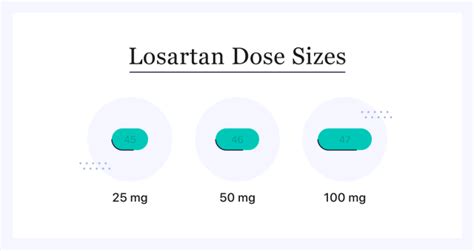Intro
Discover the potential risks of Losartan, including common side effects like dizziness, diarrhea, and back pain, as well as rare but serious blood pressure medication interactions and kidney problems, to make informed decisions about your hypertension treatment.
The importance of understanding medication side effects cannot be overstated, especially when it comes to widely prescribed drugs like Losartan. Losartan, an angiotensin II receptor antagonist, is primarily used to treat high blood pressure and protect the kidneys from damage due to diabetes. While it is effective in managing these conditions, like all medications, it comes with potential side effects that patients should be aware of. Recognizing these side effects is crucial for managing them effectively and ensuring the medication's benefits outweigh its risks.
High blood pressure, or hypertension, affects millions of people worldwide and is a significant risk factor for heart disease, stroke, and kidney disease. Losartan, by blocking the action of angiotensin II, helps to relax blood vessels, thereby lowering blood pressure and reducing the strain on the heart. Its role in protecting the kidneys is particularly important for patients with diabetes, as diabetic nephropathy is a leading cause of chronic kidney disease and end-stage renal disease. Despite its benefits, the potential for side effects necessitates careful monitoring and patient education.
The management of hypertension and diabetic nephropathy with Losartan requires a comprehensive approach, including lifestyle modifications and regular medical follow-up. Patients on Losartan should be informed about the possible side effects they might experience, which can range from mild and temporary to more severe and potentially life-threatening. Understanding these side effects not only enhances patient compliance with treatment plans but also facilitates early detection and management of adverse reactions. This knowledge empowers patients to take an active role in their healthcare, ensuring the safe and effective use of Losartan.
Common Losartan Side Effects

Less Common but Significant Side Effects
In addition to the common side effects, there are less common but potentially more serious side effects associated with Losartan. These include changes in kidney function, especially in patients with pre-existing kidney disease, and an increase in potassium levels (hyperkalemia), which can be dangerous. Patients should also be aware of the potential for allergic reactions, although these are rare. An understanding of these less common side effects underscores the importance of regular monitoring and follow-up appointments with healthcare providers.Losartan and Pregnancy

Managing Side Effects During Pregnancy
For women who must take Losartan during pregnancy, close monitoring by a healthcare provider is essential. This includes regular check-ups and ultrasounds to monitor fetal development and watch for any signs of potential problems. Patients should immediately report any concerns or symptoms to their healthcare provider. The management of side effects during pregnancy requires a balanced approach, weighing the benefits of the medication against the potential risks to the fetus.Losartan Interactions with Other Medications

Minimizing the Risk of Interactions
To minimize the risk of interactions, patients should adhere to their prescribed medication regimen and consult their healthcare provider before starting any new medications, including over-the-counter drugs and supplements. Regular review of medications and potential interactions can help prevent adverse effects and ensure the safe use of Losartan.Long-Term Use of Losartan

Benefits of Long-Term Losartan Use
Despite the potential risks, the long-term use of Losartan can offer significant benefits for patients with hypertension and diabetic nephropathy. These benefits include sustained blood pressure control, reduced risk of heart disease and stroke, and protection against kidney damage. For many patients, the benefits of Losartan outweigh the risks, making it a valuable component of their treatment plan.Conclusion and Future Directions

Empowering Patients Through Education
Empowering patients through education is a critical aspect of Losartan therapy. By providing patients with comprehensive information about their medication, including its benefits, potential side effects, and importance of adherence, healthcare providers can enhance patient compliance and outcomes. This educational approach not only improves the management of hypertension and diabetic nephropathy but also fosters a collaborative relationship between patients and healthcare providers, leading to better health outcomes.Final Thoughts

What are the most common side effects of Losartan?
+The most common side effects of Losartan include dizziness, lightheadedness, and back pain. These are generally mild and may resolve on their own as the body adjusts to the medication.
Can Losartan be used during pregnancy?
+Losartan is classified as a category D medication in pregnancy, meaning there is evidence of risk to the human fetus. It is generally recommended that women who are pregnant or planning to become pregnant discuss alternative treatments with their healthcare provider.
How can I minimize the risk of interactions with other medications while taking Losartan?
+To minimize the risk of interactions, patients should adhere to their prescribed medication regimen and consult their healthcare provider before starting any new medications, including over-the-counter drugs and supplements.
We invite you to share your thoughts and experiences with Losartan in the comments below. Your insights can help others better understand the benefits and challenges of this medication. If you found this article informative, please consider sharing it with others who might benefit from this information. Together, we can promote greater awareness and understanding of hypertension and diabetic nephropathy management.
